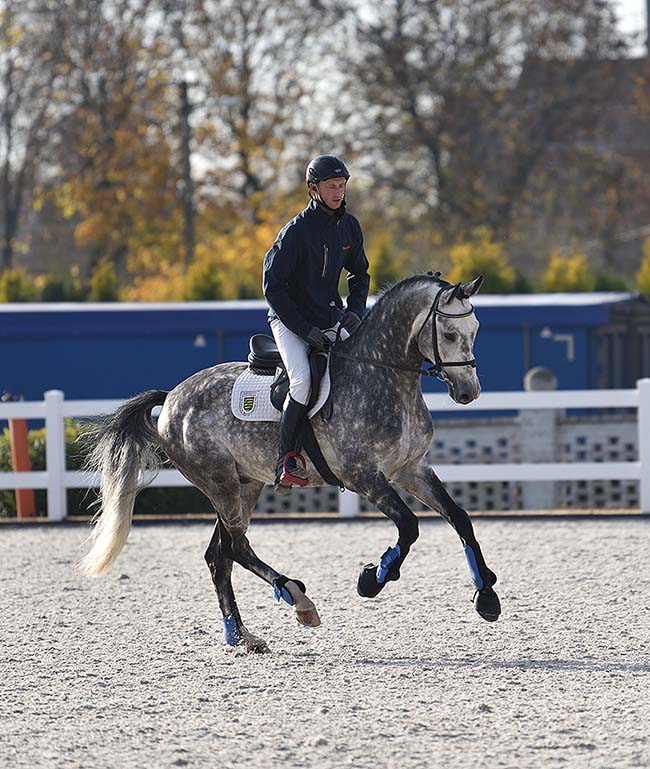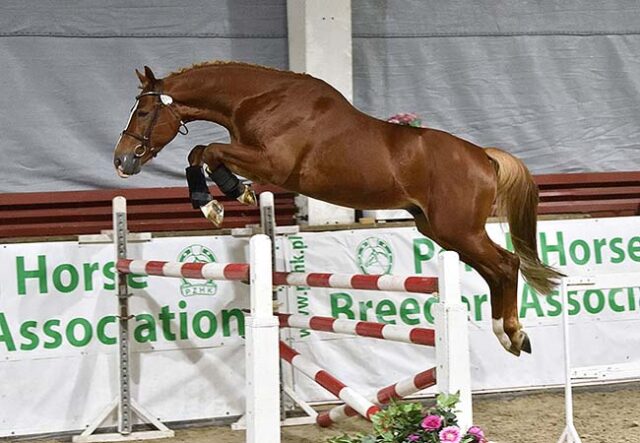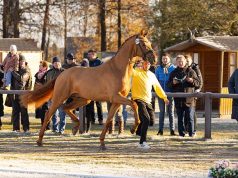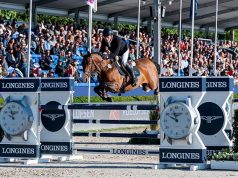By Jaroslaw Lewandowski / PZHK
Photography: Katarzyna Wiszowaty
In November 2020 a trial took place concluding the 100-days under-the-saddle performance test of 17 stallions from Poland and Germany at the Łąck stallion Depot in Poland, where the system of gaining and awarding licences is very flexible.
Alongside the said 100-day stationary test, riding stallions can qualify for breeding basing on sport achievements, results in the young horse championships, and two-day field performance test. Every owner chooses the selection path for his/her stallion, taking into consideration the intended direction of his career, degree of advancement in development and training, as well as the potential and cost of available training facilities.
The 100-day test recorded in studbook breeding programmes for riding horses bred within the Polish Horse Breeders Association (PZHK) is the only form of stationary training existing in Europe that has such a time span and includes also an element of cross-country work. This is the reason that it’s a particularly interesting alternative, first of all for breeders oriented towards three-day-event horses. Presently, in the programmes of other European breeding associations, a path directed towards the selection of young eventing stallions is difficult to find.
Hence the considerable interest demonstrated by Trakehner horse breeders (Trakehner Blancor, Grenoble, Sturmpfeil, as well as Dacerus and Liard, with Trakehner pedigrees recorded in the Wielkopolska studbook maintained by PZHK), for whom, breeding of horses for the discipline of eventing is the main direction next to specializing in horses for dressage. The Trakehner Association took a high eighth place in the WBFSH ranking for this discipline, with Trakehner Grafenstolz (Polarion - Gipsy Lady x Camelot) leading the list of best sires.
In the evaluation trial upon completion of the 100-day training the basis for calculating the final scores is made by the following elements: free jumping, jumping under saddle, work under the saddle in walk, trot and canter/cross country jumping (committee and head of the training centre), as well as rideability and aptitude for the discipline (by the jumping rider and the dressage rider).
All the above scores are taken into consideration in calculating the overall result. The dressage score is based on: work under the saddle in walk, trot, and canter and evaluation by the dressage test rider; while the jumping score is calculated from: free jumping, jumping under saddle, work under saddle in canter, and evaluation by the jumping test rider.

It is worth taking this opportunity to emphasize the importance of the possibility to observe horses during work in the field, also in the context of their dressage and jumping potential. This offers the committee an additional chance for possible correction of gaits and the jumping-under-the saddle evaluation.
As experience has shown the indoor arena often limits horses’ ability to demonstrate their qualities in full. When working outdoors they tend to be more expressive, moving and jumping more freely... To read the complete article you need to be a subscriber
CLICK HERE TO SUBSCRIBE TO BREEDING NEWS
SUBSCRIBERS CAN READ THE COMPLETE ARTICLE BY LOGGING IN AND RETURNING TO THIS PAGE




